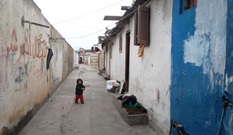25 September 2016 – War, conflict and persecution have forced millions of people to flee their homes and seek refuge and safety elsewhere. As of 2015, there were 250 million international migrants, of which 150 million are migrant workers. Also affected are particularly vulnerable groups of refugees (21.3 million) and internally displaced persons (40.8 million). Of these, 9.1 million refugees and 21 internally displaced persons (IDPs) originate from the Eastern Mediterranean Region, which carries the largest burden of refugees and IDPs globally.
Properly addressing the health needs of migrants and refugees improves their health, protects global public health, facilitates integration and contributes to social and economic development in the host country. Yet, while the health of migrants is a prequisite for their positive contribution to inclusive growth and sustainable development, health has not been extensively included in debates outside the health sector or within the 2030 Sustainable Development Agenda, in particular goals 3.8 and 10.7 to ensure healthy lives for all and to leave no-one behind. Adopting a human rights-based approach means that the rights of refugees, asylum seekers and migrants and the right to health are integral to all priorities and actions.
On 19 September, the United Nations hosted the first high-level UN summit on “Addressing large movement of refugees and migrants” in which Member States endorsed the New York Declaration for Refugees and Migrants, expressing the commitment and political will of world leaders to protect the rights of refugees and migrants, to save lives and share responsibility for large movements on a global scale. On the sidelines of the summit, representatives from the World Health Organization (WHO), the Office of the United Nations High Commissioner for Refugees (UNHCR), and the International Organization for Migration (IOM)
convened in New York to increase collaboration in addressing the urgent issue of health in the context of migration and forced displacement.
These events follow extensive efforts by WHO to address the health of migrants and refugees. WHO organized a technical briefing on migration and health during the 69th World Health Assembly in May 2016. The recommendations and priority actions discussed during the briefing, together with operational framework developed from the Madrid Global Consultation, have been used to guide WHO work on migration and health in all WHO regions.
At a High-level Meeting on Refugee and Migrant Health, held in Rome, Italy, in November 2015, Member States of the WHO European Region agreed on the need for a common framework for collaborative action on refugee and migrant health, acting in a spirit of solidarity and mutual assistance, to promote a common response, thereby avoiding uncoordinated single-country solutions. This framework led to the development of a Strategy and Action Plan on Refugee and Migrant Health in the WHO European Region, along with a Resolution, calling for urgent action and a concerted and coordinated response based on solidarity among Member States.
The strategy and action plan are designed to respond to the health needs associated with the migration process. These include the need to ensure the availability, accessibility, acceptability, affordability and quality of essential services in transit and host environments, including health and social services, together with basic services such as water and sanitation. It also addresses vulnerability to health risks, exposure to potential hazards and stress, and increased susceptibility to poverty and social exclusion, abuse and violence, and stigmatization and discrimination. The priority areas within the strategy and action plan will be implemented taking account of the specific country contexts and in accordance with national legislation, priorities and circumstances.
Related links
Web site: Addressing Large Movements of Refugees and Migrants
Video: The “human face” of migrants
Photo: Amelia Rule/CARE International


